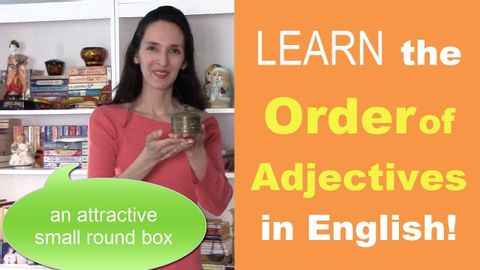
Subtitles & vocabulary
Order of Adjectives in English - Grammar Lesson 31 - Learn with JenniferESL
00
Sam posted on 2015/03/29Save
Video vocabulary
phrase
US /frez/
・
UK /freɪz/
- Noun
- Common expression or saying
- Section of musical notes in a piece of music
- Verb (Transitive/Intransitive)
- To choose words to say what you mean clearly
A2
More head
US /hɛd/
・
UK /hed/
- Verb (Transitive/Intransitive)
- To hit a ball with your head in a game
- To be first or at the front or top (e.g. a list)
- Countable Noun
- Counter for the number of cattle
- Leader or person with the greatest authority
A1TOEIC
More opinion
US /əˈpɪnjən/
・
UK /əˈpɪnjən/
- Noun
- Court judge's statement why a decision was made
- A person's thoughts on a topic
A2TOEIC
More order
US /ˈɔrdɚ/
・
UK /'ɔ:də(r)/
- Noun
- Religious or social group, as of nuns
- Instructions to others to do what you want
- Transitive Verb
- To put things in a sequence, e.g. a, b, c
- To give instructions to others to do what you want
A1TOEIC
More Use Energy
Unlock All Vocabulary
Unlock pronunciation, explanations, and filters
